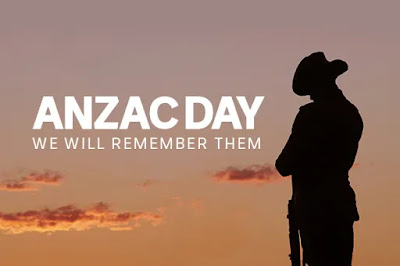 |
They shall grow not old, as we that are left grow old:
Age shall not weary them, nor the years condemn.
At the going down of the sun and in the morning,
We will remember them.
LEST WE FORGET
Anzac Day is a national day of remembrance in Australia and New Zealand that broadly commemorates all Australians and New Zealanders "who served and died in all wars, conflicts, and peacekeeping operations" and "the contribution and suffering of all those who have served". Observed on the 25th of April each year, Anzac Day was originally devised to honour the members of the Australian and New Zealand Army Corps (ANZAC) who fought at Gallipoli against the Ottoman Empire during World War I. (1914–1918) Anzac Day is also observed in the Cook Islands, Niue, Pitcairn Islands, and Tonga, and previously was a national holiday in Papua New Guinea and Samoa. Anzac Day marks the anniversary of the first campaign that led to major casualties for Australian and New Zealand forces during the First World War.
The acronym ANZAC stands for Australian and New Zealand Army Corps, whose soldiers were known as Anzacs. Anzac Day remains one of the most important national occasions of both Australia and New Zealand a rare instance of two sovereign countries not only sharing the same remembrance day, but making reference to both countries in its name. When war broke out in 1914, Australia and New Zealand had been dominions of the British Empire for thirteen and seven years respectively. World War One was one of the deadliest conflicts in the history of the human race, in which over 16 million people died. The total number of both civilian and military casualties is estimated at around 37 million people. The war killed almost 7 million civilians and 10 million military personnel. Two out of three soldiers died in battle, the rest died due to infections or disease. The Spanish flu also killed a lot of people in prisoner camps.
For Australia
The First World War remains the costliest conflict in terms of deaths and casualties. From a population of fewer than five million, 416,809 men enlisted, of whom more than 60,000 were killed and 156,000 wounded, gassed, or taken prisoner.
For New Zealand
The Red Poppy
In Flanders fields
The red or Flanders poppy has been linked with battlefield deaths since the Great War (1914–18). It was one of the first plants to grow and bloom on battlefields in the Belgian region of Flanders. The connection was made most famously by a Canadian medical officer, Lieutenant-Colonel John McCrae, in his poem, ‘In Flanders fields’.
LEST WE FORGET




No comments:
Post a Comment